Reptilive Research and Development Case Study
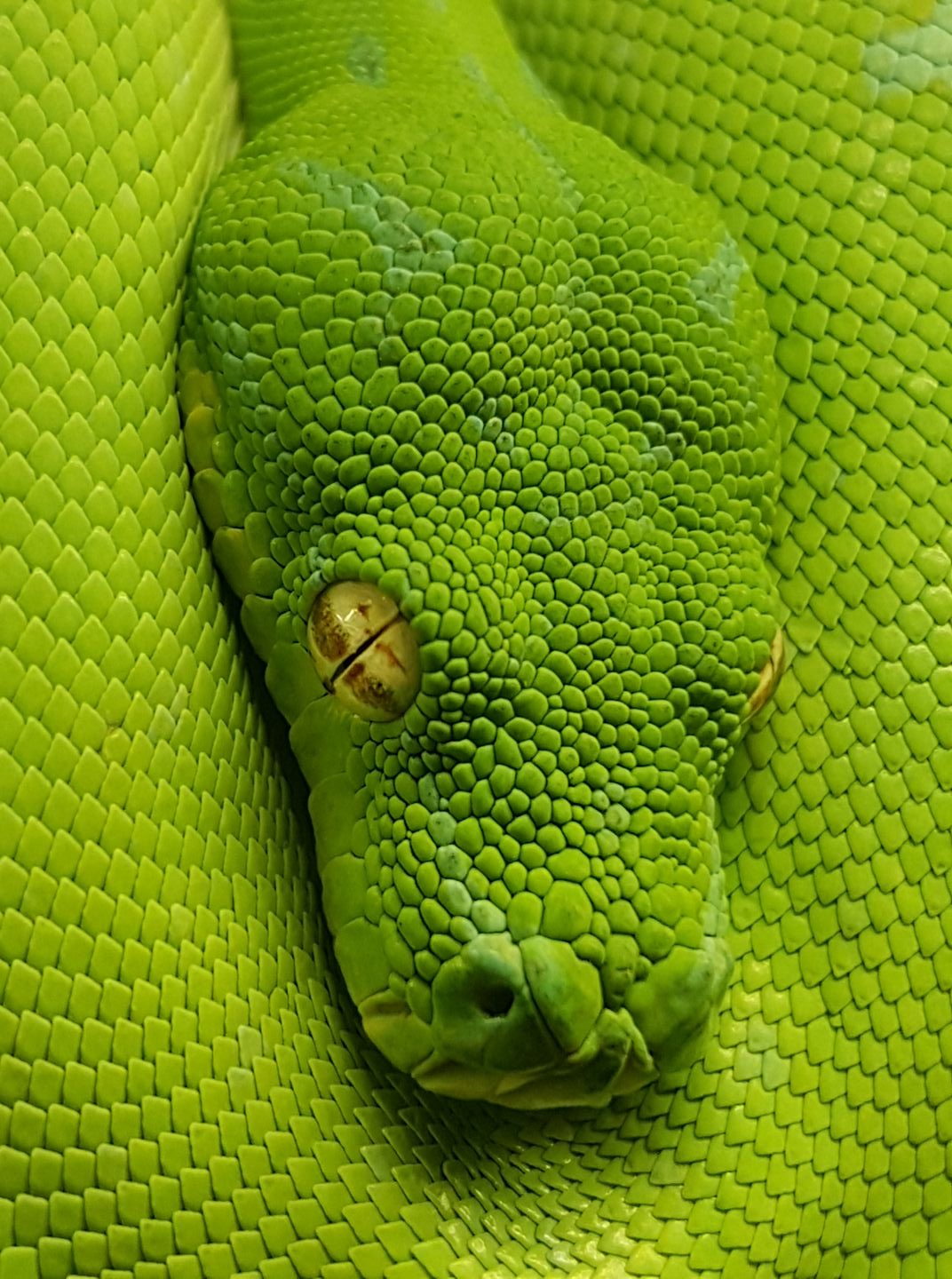
The Elevator Pitch
The current state of the art in reptile management technology is a box which sits outside the animal’s enclosure with a number of wires protruding from it. One goes into the enclosure to measure the temperature, one runs to a mains plug to draw power, and one runs to a socket outlet into which the heater is plugged. There are a range of different models but around 90% follow this pattern and cost between $50 and $160. The other ten percent are more ‘intelligent’ devices which are either built into an enclosure or which report data back to the user. These tend to cost more than $160. We think there is room for improvement in two ways:
The price is too high. Many new owners skimp on the control unit as result and animals become burned or unable to function due to lack of heat. In contrast, the actual function of the device is not too complicated and could be marketed at a lower price point, making it more accessible to owners and incentivising companies to offer them as part of ‘beginner deals’ where the customer purchases their animal with everything they need to care for it.
The devices are unhelpful. Every carer without access to an experienced contact is left to combine internet research with guesswork. They can be set up wrongly and are an unsightly bulk which people try to hide out of sight, so even if they indicate that they are functioning, this can’t be seen. There is so much opportunity for learning here, and no product enables this.
So, we set out to design a tool which not only did the job cheaper, but also offers the chance for users to operate in a data-informed way and to learn about the animals in their care.
Ux Research
Drawing on the experiences of our contacts online through their voluntary participation in a non-synchronous discussion forum over the course of two months, we put together personas for two groups of primary users. One new to the hobby, one looking to operate profitably at scale. The second was a suprise for us, but it led us to thinking about how stores and their owners might be able to add value to their business offering, and it goes to show that we do this research and design work for good reasons. Perspective is important.
Val, the Hobby Novice
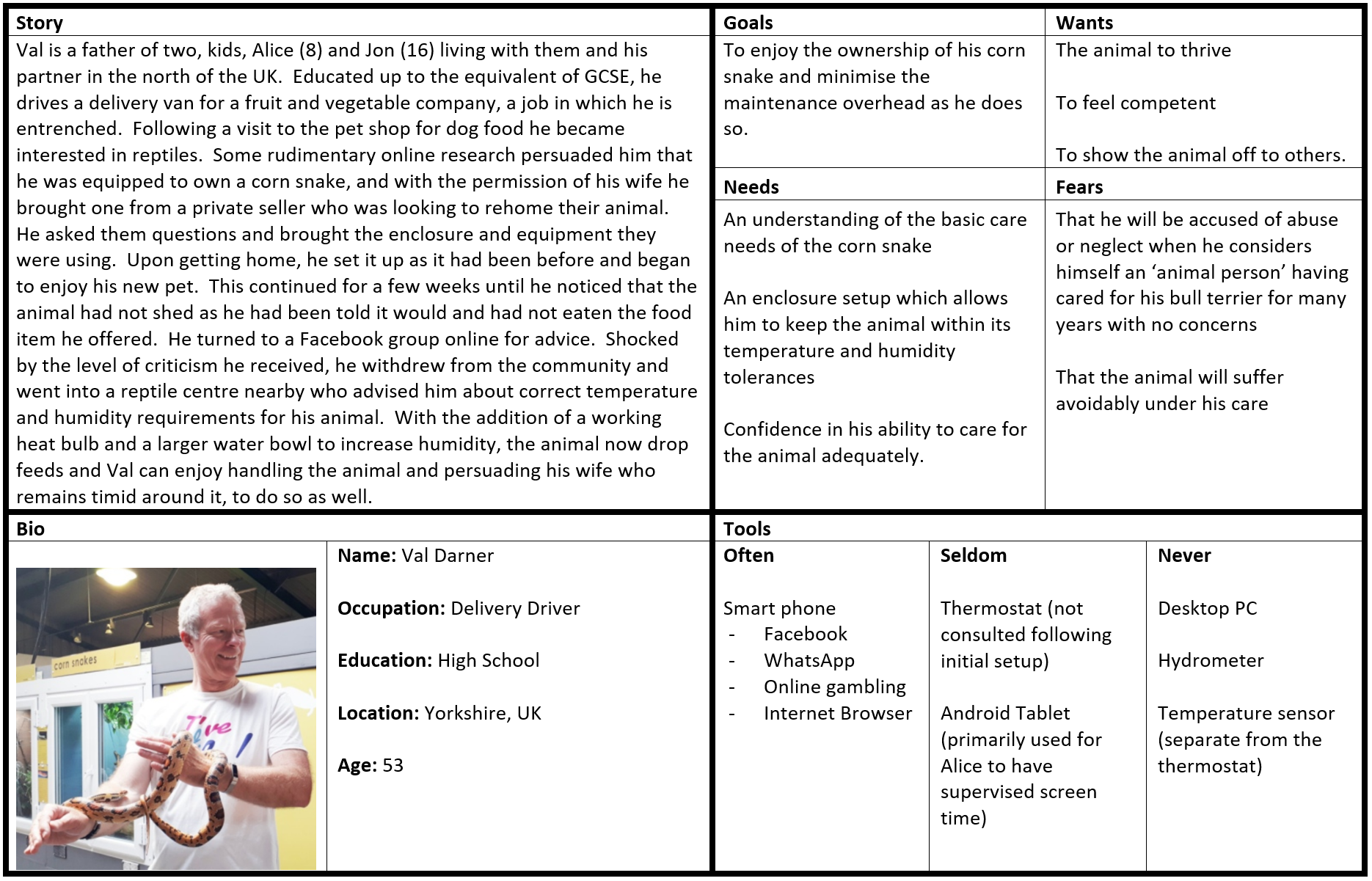
Val is an archetypical ‘new user’. He is able to operate the enclosure and its thermostat but has no good source of information about what parameters he should be working with or how he can go about improving his care. He has some motivation to do so from concern about how he will be viewed by others and concern for the animal’s welfare. Faced with the eating and shedding issues his pet is demonstrating, he knows that his knowledge of reptile husbandry is potentially inadequate. He demonstrates himself to be somewhat motivated to address this issue. He needs to know if the temperature and humidity of the enclosure is set appropriately. He also needs a mechanism to become aware of change in this regard as he doesn’t have anything behaviourally or technologically to mitigate this aside from observation of the animal. He is working with second-hand equipment but on a low income he is not about to replace it if at all possible and would consider rehoming the animal if faced with the prospect of having to do so unexpectedly and to a cost above £35. This threshold could rise if he was able to secure buy-in from his partner who is reticent to interact with his new pet and considers it a luxury, unlike their pet dog who would be cared for regardless of the circumstances.
Aadhya, the Professional

Aadhya has a business which has demonstrated itself to be sustainable. However, with online stores providing better value for money, she relies on staff-customer contact during regular visits from committed to buy feeder insects and other consumables to maintain the business. As such she is often happy to chat, offer advice and show off animals in her care to interested parties. She does some outreach which has likely resulted in a bolstering of her sales (although with little record keeping. it would be difficult to demonstrate this). In terms of the equipment she uses, it is checked for continued function regularly, and thermostats or bulbs are replaced as necessary. However, this doesn’t allow detailed enough data to be collected to fine tune the environment for an individual animal beyond the initial setup. The lack of data is key to Aadhya’s situation. She doesn’t know much about how her own animals are set up and knows nothing of how her customers’ care is progressing beyond what they tell her. Consequently, diagnosing issues is reliant on customer honesty, knowledge and care to be effective.
Please do note that the presence of these personas doesn’t suggest that the design weighting for each is equal, there is still a decision making process which is needed to determine which of these experiences we design most directly into which has commercial impact. It is easy to assume the work you are doing is central to the process, but experience has taught me that views of a diverse range of stakeholders matter beyond the user in isolation.
Development Activity
Speaking of balancing stakeholder needs, from this point, requirements engineering was able to take place. Specifics here need to be kept confidential beyond what is in the introduction about the business case. In the meantime, below are some images of our prototyping process with notes, firstly around the hardware and secondly around the Ux:
Hardware
We built the first from consumer available parts built around the Wemos D1 ESP8266 platform:
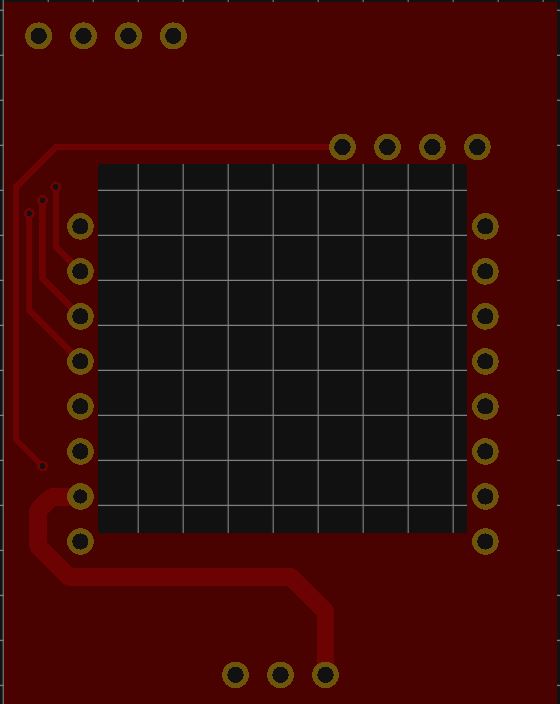
!(Modular board image 2)[modular2.png]
We began by breadboarding and then moved to the production of simple PCBs which would allow us to miniaturise the device enough to fit it inside a suitably rugged container for testing purposes. This gave us the opportunity to establish the sensitivity necessary from sensors of temperature and humidity to operate safely and effectively in the environment and we could collect some ‘real world’ data from which Reptilive would derive its value.
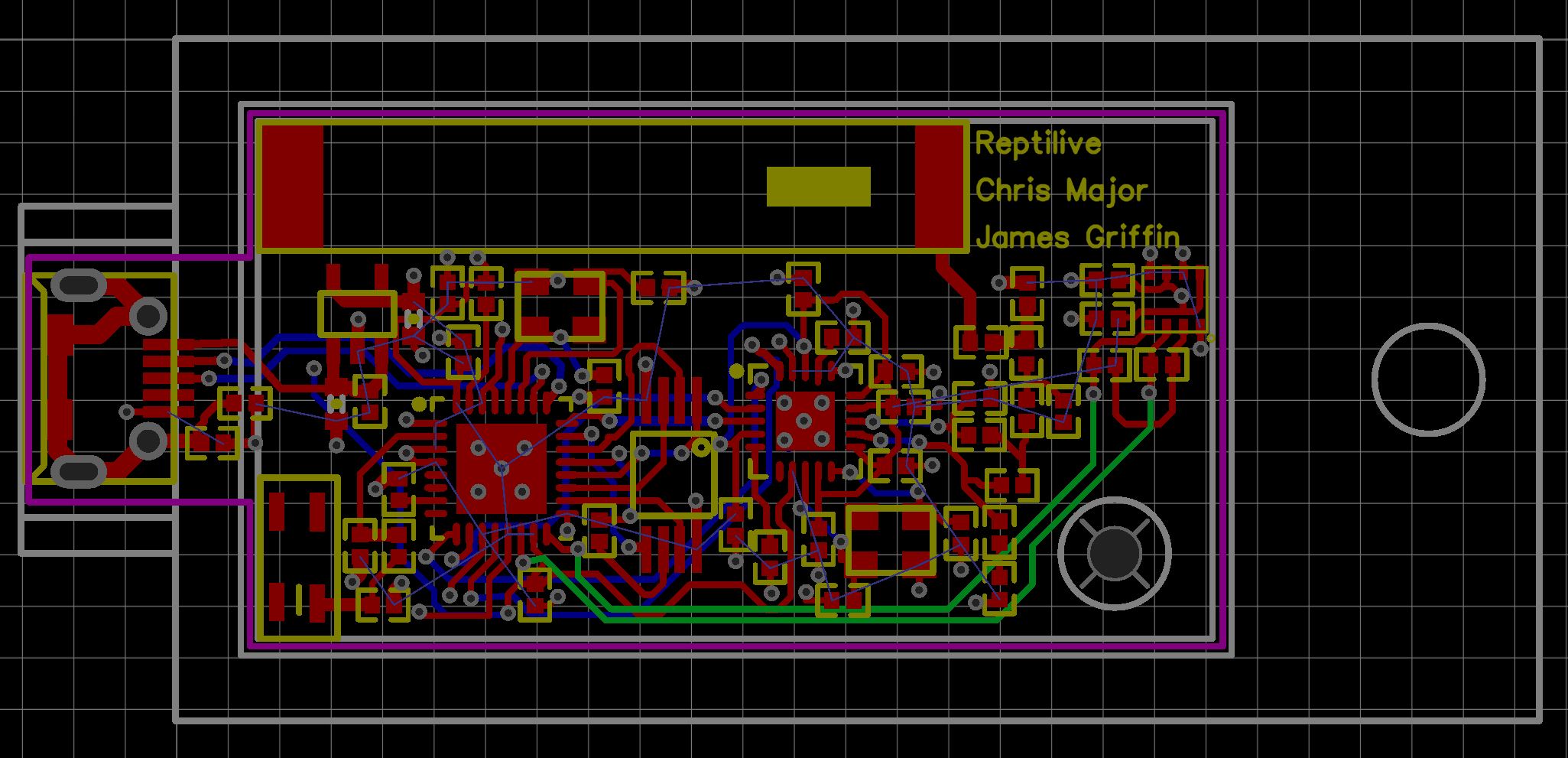
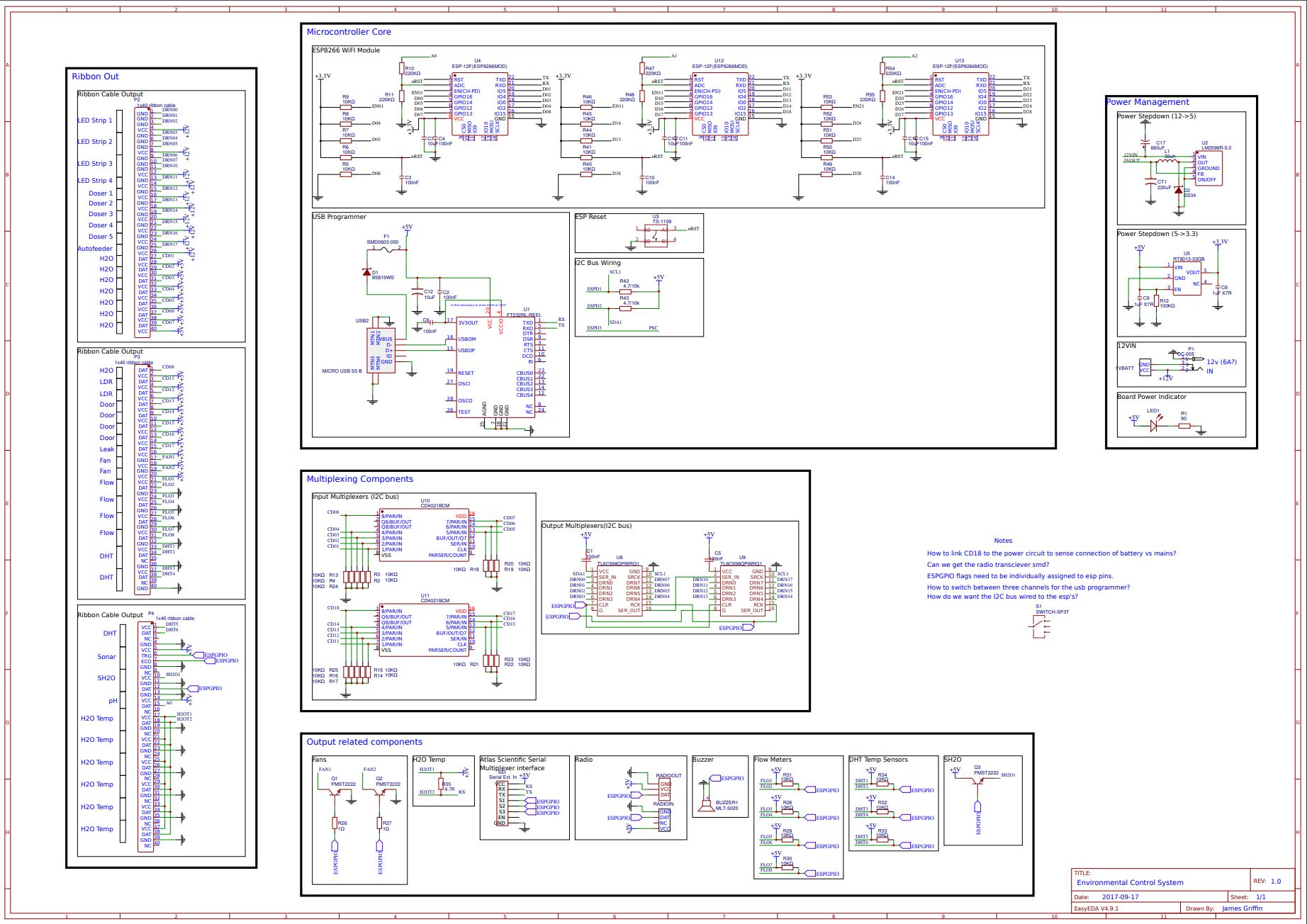
From here we have since continued to develop, debug and refine prototypes.
User Interface Design
In terms of the user interface, again this is only a summary while the product is still in development. We can clearly see that there is a lack of data being provided to both Val and Aadhya. Val is missing knowledge of basic environment-defining factors such as temperature and humidity. He also cannot check what parameters his equipment are functioning at. This makes diagnosis of husbandry issues nigh on impossible beyond observation of animal behaviour. Aadhya is also reliant on ad-hoc checks of her equipment, albeit more regularly. However, fine tuning this, particularly with a high turnover of animals in any given enclosure is beyond her ability with the tools at her disposal. In addition, she depends upon customers to provide her with data to diagnose their issues for them, her primary source of added value for the customer. The UI therefore needs to enable an Aadhya and a Val to work together for their mutual benefit. It also needs to be simple and clean to make it worthwhile for them to engage with. There are two primary flows which need to be understood: Setup and Use. Setup is important because some happens native to the reptilive hardware in the enclosure and some happens in the Reptilive software. Below is one of our early drafts of what this would look like:



The use of the software associated with Reptilie has to suit both Val and Aadhya This requires that the data of an individual enclosure is easy to see and diagnose from at a glance, and that as more vivaria are included on the system for a user, they can efficiently navigate between them. Here is an early mockup of the visualisation of a single enclosure:
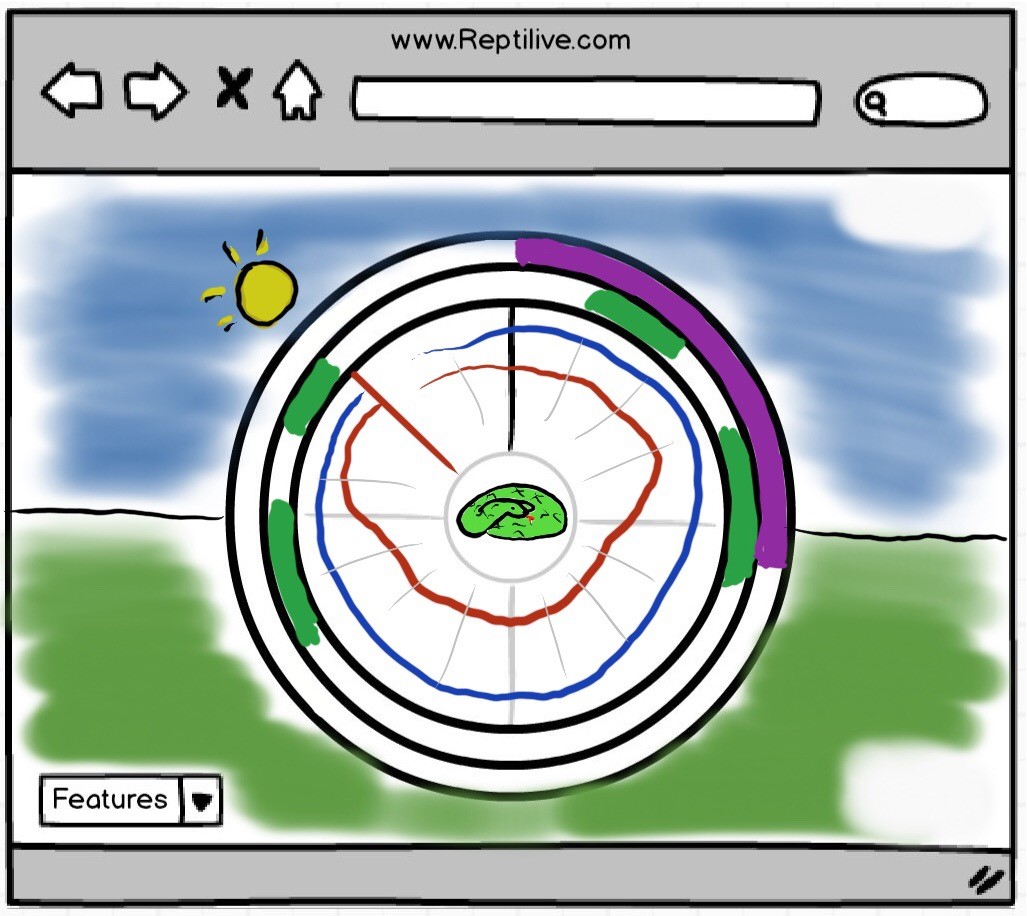
This polar graph shows temperature, humidity and anything else which the reptilive device controls on and off. The purple and green bezels are representative of any on/off devices (such as a rain machine) and when they were activated. This would allow for scaleability, with more or fewer of them as needed. Here we tried to move away from the idea of a clock, because that metaphor is confusing. The ‘horizon level’ in the background could be adjusted to indicate the night time drop and the sun indicates the current time of day and it would turn into a moon as it goes around the bottom of the graph. The features drop down gives access to turning on/off what is shown. Then, one line for temperature and one for humidity. An uploadable pic of the enclosure inhabitant(s) to improve association with the product and an easily demarcated ‘now’ line.
I look forward to sharing more detail about the design and development of the Reptilive hardware and software as it is now when it is commercially viable to do so. In the meantime, various prototypes are operating to maintain the following animal enclosures:
Eros the Green Tree Python (Morelia Viridis)
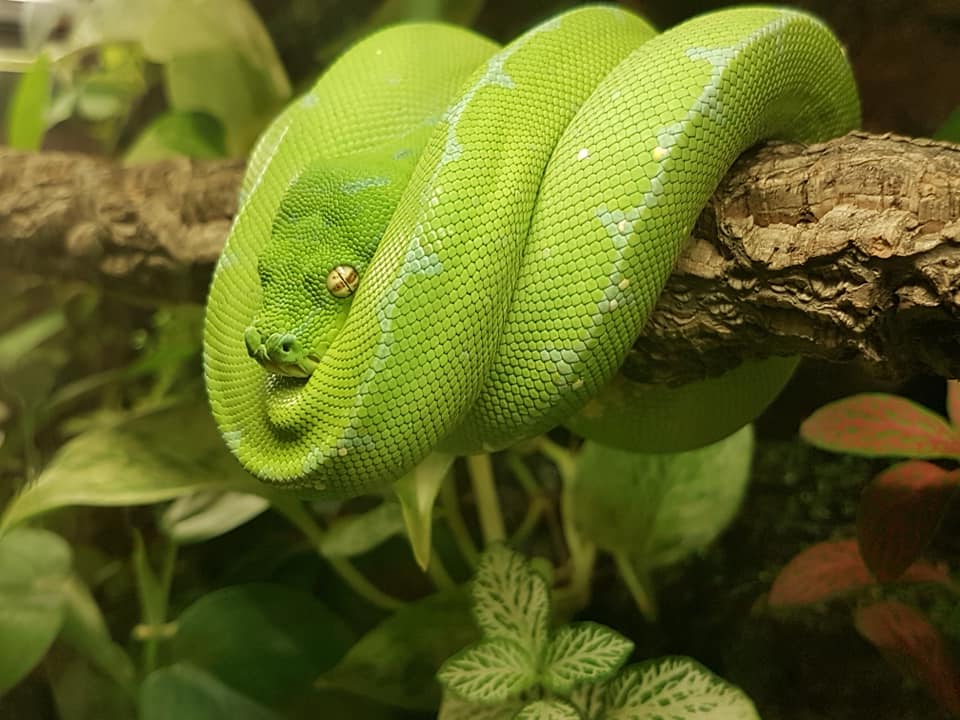
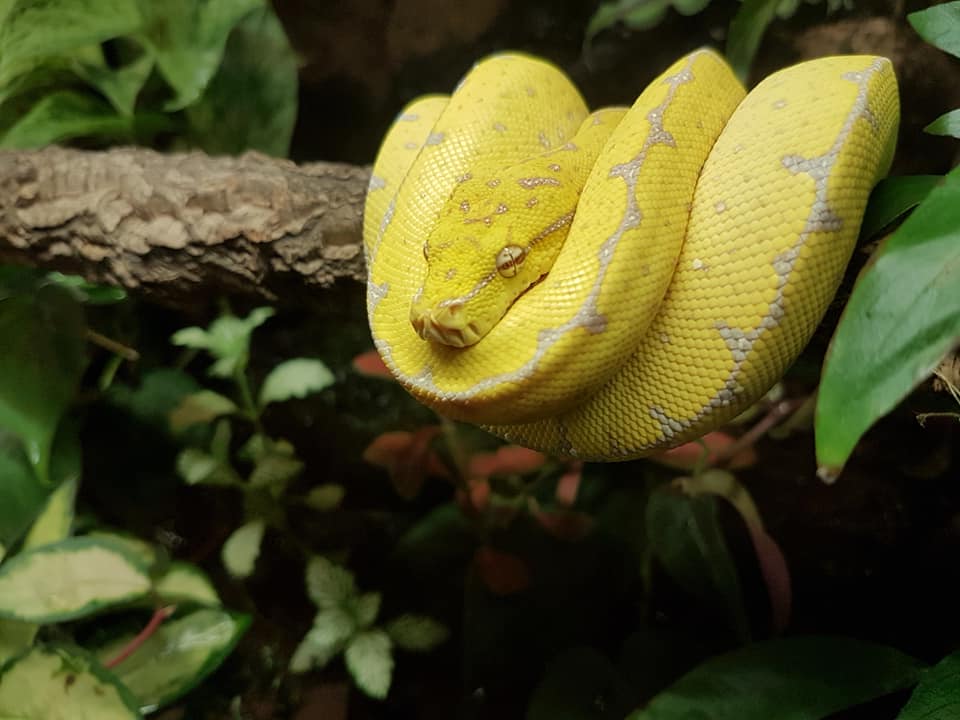
Egyptian Sand Gecko colony (Tropiocolotes Nattereri)
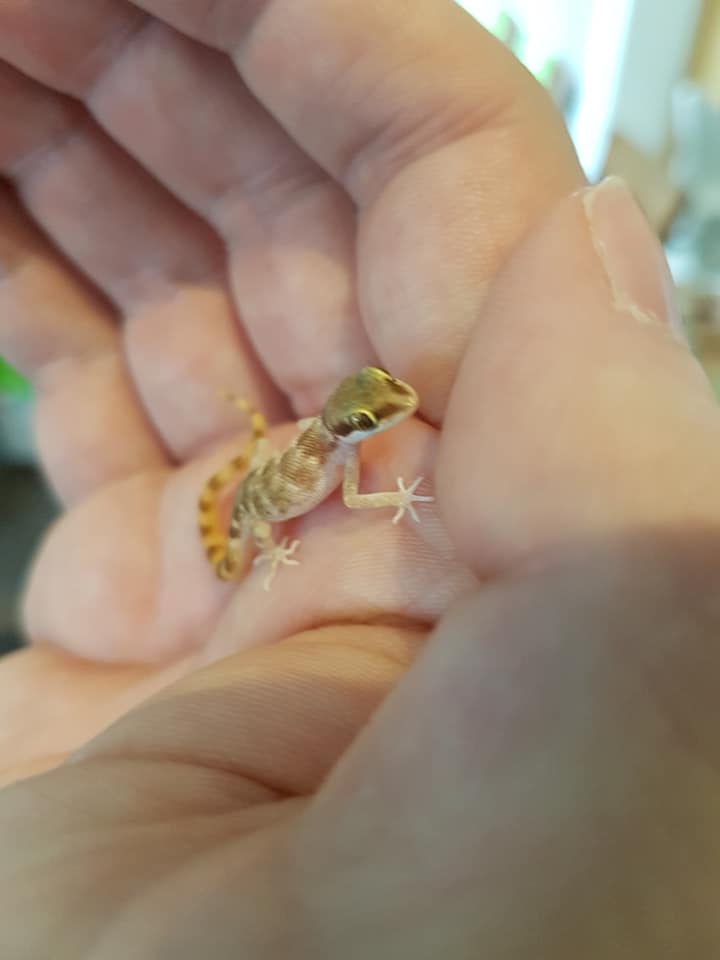
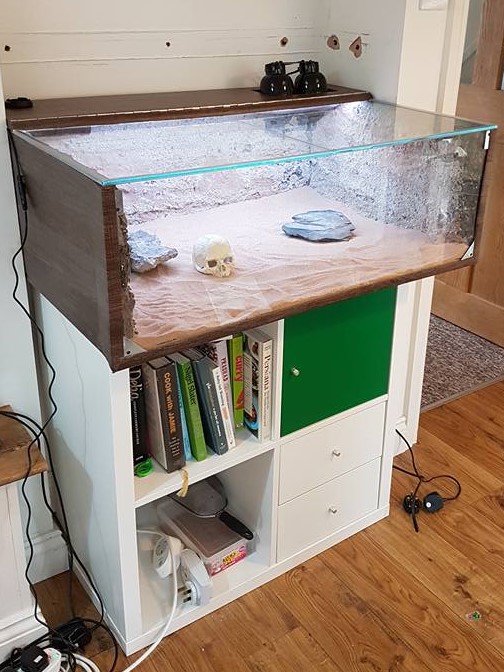
If you would like to discuss this project with me, please do get in touch through this site and if you would like to see me working on the research, design or development of something you are making then I'm open to new opportunities, so likewise, please drop me a message and we'll talk.